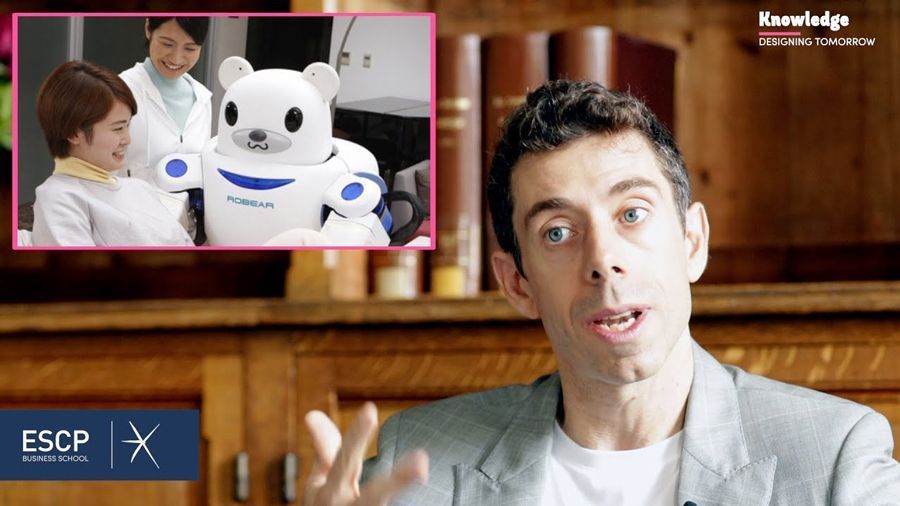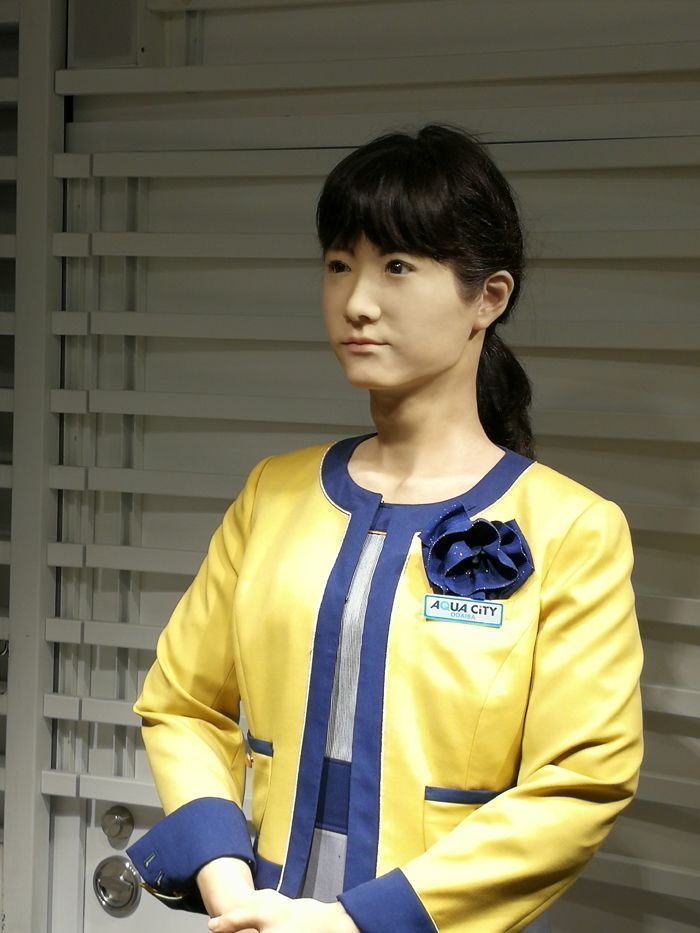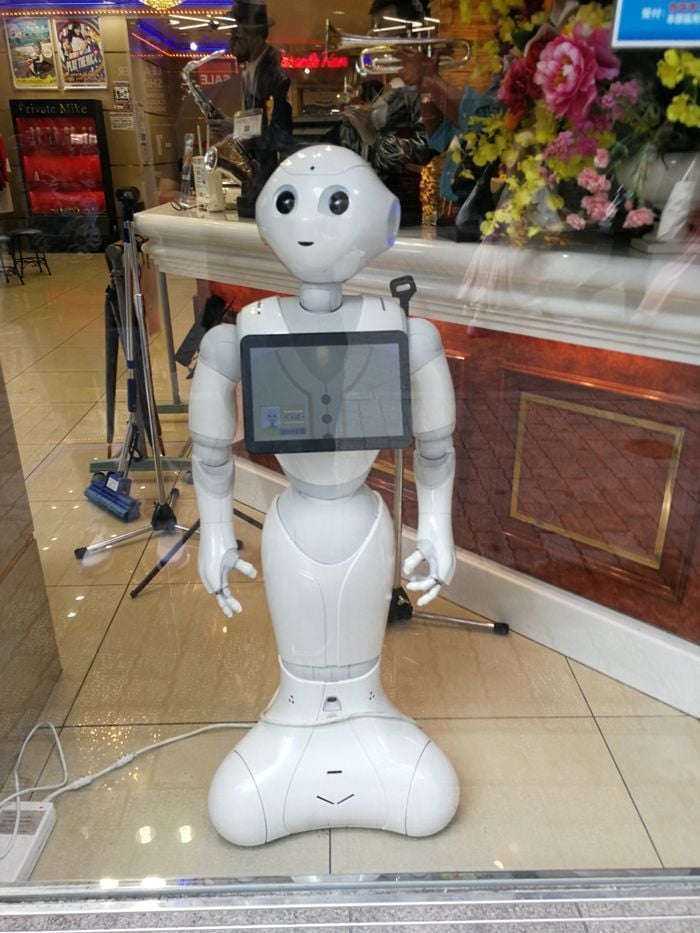HealthManagement, Volume 21 - Issue 3, 2021
What examples of robotics/AI application areas in healthcare would you highlight?
We can differentiate in this domain to see what is happening already in terms of the capabilities that these technologies have versus what might be happening in the future. We’ve already seen some applications in the medical domain, in particular in hospitals. For instance, during the pandemic robots are being used as an ‘interface’ between medics and patients helping reduce human contact and thus, the virus transmission. Robots would take temperature, bring the medicines to the patient while the doctor could still communicate – remotely, through the robot – with patients.
Then, of course, robotics is increasingly used in surgery allowing the surgeon to be much more precise. Experiments on conducting a surgery remotely take place as well offering new opportunities to provide treatment. Obviously, this requires some very strong connectivity to ensure proper transfer and processing of data.
Speaking about possible applications that shouldn’t be too complicated, it may be in pharmacies, with robots being used to provide products or services, especially if the work of humans is restricted because of time or resource constraints, such as during night shifts or in remote areas. Perhaps, these could even be managed remotely by a human on call, servicing multiple pharmacies through an interface.
Another example could be elderly care facilities where robots are already being used to support physical manipulation of patients. We’re seeing that in particular in Japan, where more and more elderly homes use robots to enhance such activities.
These examples are not very far-fetched. It is more a matter of if they are integrated and when, but this goes into a different topic of finances, economics, acceptability, or resistance on the part of patients and healthcare managers.
Is there danger of potentially negative perception of robots in patients and healthcare workers?
I can only imagine that the reaction will not always be positive, it can be all sorts of anxiety. It very much depends on the person that is being confronted with or using the robot. Just like with other technology, sometimes so simple as smartphones, we have people who are afraid to use it.
In the pharmacy example, it would be a matter of how easy it is to receive the service. Yes, there might be an initial surprise, but if everything functions smoothly and the person is not required to have any specific technological knowledge, that is key. This could be the ATM of pharmacies. Banks are increasingly introducing technology. This is not always in the customers’ interest, but there is surely an increased use of ATM or online banking. So it’s a matter of progressive integration and this still needs to have human support available at the initial stages.
Speaking of the elderly in the long-term care facilities who, for example, may be opposed to their ‘favourite nurse’ being replaced by a robot, this situation brings about the issue of empathy and human touch that cannot be replicated yet. However, there have been studies where robots were deployed in such facilities and some of the responses were very positive. You would see residents playing with a robot that resembled a pet. Another robot would engage them into exercising, and they developed a certain affinity towards it. Again, no technical knowledge was required for them to interact with the machine. This is where the trade-off comes in.
Another point is resource limitations in the industry, e.g. in terms of being understaffed to provide the necessary attention to the patients. This is as well where the integration of these robots can be helpful. It’s about enhancing the experience, so perhaps these robots can entertain, or take care, or help avoid some of that loneliness which the elderly people might experience.

It is about measuring this, and that gets to one of the points that are receiving much attention currently: it should not be about replacing; it should be about collaborating to enhance the experience for the patient and for the worker. We should integrate robots and humans to make the experience better; so that human staff are freed up for activities at which they’re better and that the patient receives the added value, or added care. That should be the goal of the integration of these technologies.
How do you find this balance?
The challenge here goes back again to economics because at the end of the day a healthcare organisation, whether public or private, needs to be financially viable. An initial investment is required to integrate these type of machines, not just buy them. There has to be training for staff and patients, to allow for a gradual acceptance.
I am pretty confident it will lead, in the medium to long term, to the replacement of some particular tasks or reduction in the workforce, but if done correctly, I wouldn’t expect it to be as drastic as the media sometimes present it. It’s not so much about replacing a job, but replacing a particular task related to that job. Staff in a nursing home are accomplishing many tasks within their shift, and robots might take on some purely mechanical tasks like bringing a tray of food or a medicine. If you can free up human staff from those particular tasks, they will have that added time to provide services at which humans are better than the machines, which imply those human touch and care; to be with the patient longer and make them feel welcome. That psychological element is as well very important for the wellbeing of the patient.
So the leaders of those institutions should consider this integration and this need for an additional investment initially. And perhaps, yes, there will be a certain reduction of the human workforce, but we need to balance it out. It’s where that interplay between ethics and economics comes forward, and this might be supported by the relevant regulation where you have to keep certain ratios potentially. There is as well the matter of training future leaders so that the benefits of the patients and the workers are given the utmost priority.
Overall, this is, of course, not an easy task. I don’t have all the conclusive answers but it’s important to at least try and make a conscious attempt to find that balance where the end result should be an enhanced value for all. Improved care will have a positive impact in the long term, including on the financials of the organisation.
What approach would you recommend to address these challenges of introducing robotics in healthcare?
As I said, the key challenge here is the economic issues which need to be considered to make the company or the institution viable. Another one is acceptance. If you introduce these technologies and your patients are resistant, that can kill your business, especially if patients have another provider to turn to. Therefore, the priority should be in having a gradual slow integration. I would even go as far as using some sort of a test here. As certain segments of consumers are more open towards new technologies, they could be the first group to try those out. If the perception is positive, they will spread the word, become the ambassadors and may help take some of that anxiety away from others. To have this ‘trickle-down’ effect, use the early adopters similarly to influencers in the social media world.
People will also have to be provided with options and asked to consent. Having a choice between a fully human care or a human plus technology care may help smooth the integration. This, of course, again requires an investment to make this sort of a ‘sales pitch’ and demonstrate the potential advantages to users. Borrowing from the marketing domain, there may be some incentives, some benefits provided to those who opt in to use the technology.
In any case, it should be kept in mind that you can force it only up to a certain point, just like online banking is being forced on most people. It has a lot of great advantages but many people are getting very stressed with it. And the industry is not really adjusting; I would be happy to see it slow down and give people more options.
This will also differ depending on where you’re located. In some places, not just urban versus rural but also some countries versus others, people in general are more open towards the integration of these technologies while other countries might lag behind. So the rollout will also differ on a national level. But again, look at the finances, try to find an ethics vs. economy balance and smooth the integration by giving people the choice. As a result, more people would advocate this type of service, assuming it works well, obviously.
If it doesn’t work well, we have to take a step back and think if it should either be delayed or transformed on the basis of interdisciplinary feedback involving engineers, manufacturers, etc. and let them know about the needed adjustments, so that the robot or AI can be accepted and function properly in the service setting, in particular in healthcare.
Would you say that some specific education is needed to facilitate the acceptance of new technology?
Yes, absolutely. Even though I’m trying to paint a positive picture, there are drawbacks which need to be highlighted – although the media are doing enough of that already, especially in the West, creating a more negative narrative. Education is definitely needed, and I would go even further to say it is needed at all levels. There should be some global organisation to regulate these matters and provide some type of service, technically similar to the WHO.
The first in line would be people who work within the hospital. We need to take certain anxiety away from them because they might be thinking, “Why do I need to work now with a robot that might take my job away?” or “I don’t want to work with the technology, I’m doing my job well as is.” So again, this education should be about how this technology can actually help you do your job, where you can add value with it. This goes for both healthcare staff and patients.
In addition to the global organisation mentioned earlier, we would need that education at the country level, perhaps even at schools. I am not concerned with the younger generations, they’re already growing up with and accepting technology around them. But for those who haven’t had that much of technological exposure, it might be more complicated. Have you ever heard of libraries offering courses for the elderly to use the internet or a computer? There could be similar workshops on robots as well, preparing people for future experiences at the hospital, public administration offices, etc.
This is how it will work. It’s about introducing the technology and educating different populations about what they might encounter and how it might be. I would stress again here that the requirements for any technical knowledge should be minimised, not to create anxiety. Robots should be autonomous enough, be able to react to voice commands, for instance, to make the interaction as natural as possible and replicate human interaction as much as possible; that’s what people are used to. I think we can borrow this knowledge of how humans communicate and try to mirror that.
What impact has the pandemic had on the development of robotics and AI in healthcare?
I cannot give you hard figures, unfortunately, but my hunch is that is has probably accelerated, just like anything else digital has in the last year. There’s even a new joke in the corporate world: “Who is responsible for the digital transformation in your company? CIO or CTO?” and the answer is, “COVID”.
There have been a lot of reports, in particular at the beginning of the pandemic, for example, from China where autonomous vehicles were used to deliver food to people during the lockdown, and robots being used in hospitals. Just recently, a bar in Spain has been reported to be using a robotic waiter to reduce physical contact. Even if it is a publicity stunt, it creates awareness and I would not be surprised if robot manufacturers are now more busy with orders. I could imagine a hospital administrator having read the news about China and thinking if this was something they could use as well.

This is also true for regular people – users and patients. Seeing these applications might stick with them: okay, robots are here already. And that might help in accelerating this acceptance or integration process.
What about the digital divide? Wouldn’t these developments widen it?
I completely agree, it would. I don’t know how to solve this, just like we’ve been trying to solve these issues as humankind for centuries. Differences will be there because more advanced hospitals, with more resources, may be more willing to invest first and try it out. Also, countries, or even regions are just different. I don’t see any short-term solution, but perhaps, from a more positive point of view, as the integration of these technologies evolves and increases, the economies of scale may play a role, just like with any other technology. Probably, the latest version, the newest robot would always arrive first at richer places but, as with mobile phones, eventually you can have all the necessary basic functions in both expensive and cheaper devices.

From a psychological point of view, what would be the negative implications in people’s lives and health from the increased use of robotics?
I’m not a psychologist by training, but in my view, the increase in anxiety which it might create in some people goes beyond just robots and AI to include all sort of technology, such as social networks. My perspective is twofold. On the one hand, technology gives us a lot of possibilities. However, I also feel there’s that danger where we start getting disconnected on a human level. It creates a lot of tension and anxiety.
In healthcare, it’s even more delicate. You’re encountering people whose stress levels are already high. So you need to be very sensitive and very sensible when you interact with patients or people in the facility. That’s why I’m saying the integration has to be very gradual and optional, and perhaps first with people who are more open towards it. You cannot force it upon them, especially not in a healthcare setting where the anxiety or sensitivity is already high. We need to be especially careful until people understand what is the added value that they might get from that interaction. Then maybe the anxiety will be reversed and they would appreciate that process where they could walk into the hospital, check in through a facial recognition system, and a robot concierge takes them to their room, provides all the necessary equipment, etc. instead of them having to wait in line – which during the pandemic time can be a stress in itself. If everything works smoothly and can provide that type of support, it might reduce some anxieties. So it is about trying to emphasise the value that you can get.


Would it make a difference if the robot had a cultural orientation instead of being neutral?
There are projects already being realised in this direction. By fine-tuning the software, the robot is able to use facial and voice recognition, among others, to pick up keywords and get an idea of which culture you might belong to. Obviously, it builds a little bit on stereotypes but there’s high probability of the robot’s identifying the cultural background and acting accordingly, for example, allowing direct physical contact or not, using certain gestures or not, maybe mimicking some emotions, etc. This could make people feel more comfortable and even develop some type of attachment. I think that’s not far-fetched. This might be important especially in a place with very diverse population of patients, like a cosmopolitan area of a city.
In conclusion, what approach to the human/robot coexistence would you like to see in the future?
I think we need to make sure that the narrative becomes, especially in, I would say, Western society, more balanced, not focused on those Terminator or Matrix scenarios of robots taking our jobs and conquering the world. We need to find balance in terms of potential benefits and make clear that the scenario that hopefully we’ll be pursuing is collaboration to enhance overall wellbeing and our experience as a patient, a customer, or a co-worker rather than seeing robots as something which will replace us fully and take our life away. Again, the risk is there and it’s a valid argument which needs to be addressed. But our responsibility is to try and make the integration in such a way that robots are seen as collaborators, as allies rather than enemies. There’s opportunity for that and the message should also be in that line so that people can reduce their anxieties towards these technologies and be proactive towards making this happen in a more collaborative way.
Conflict of Interest
None.
You can watch the full interview here: iii.hm/18om
Some of the questions have been edited for brevity and clarity. All photos provided by the interviewee.
















